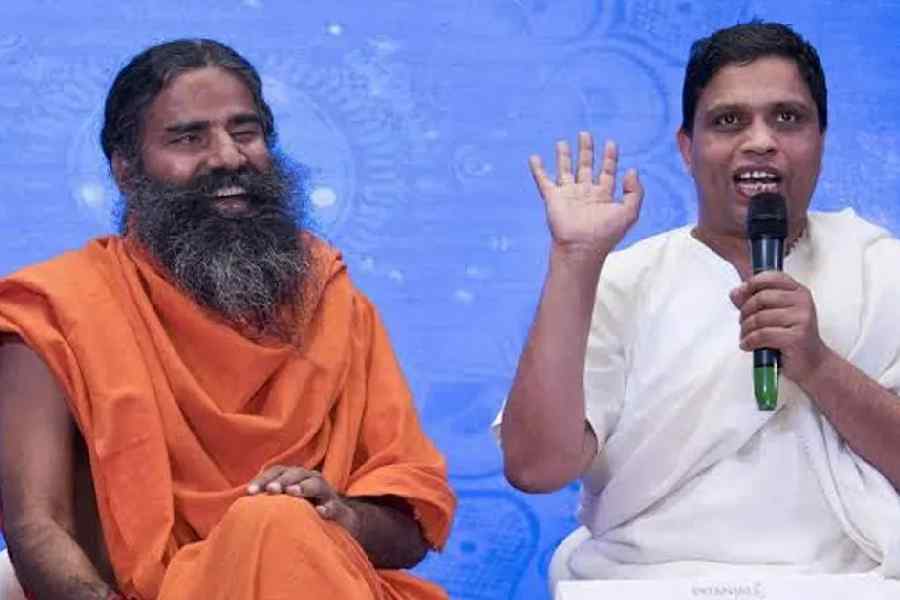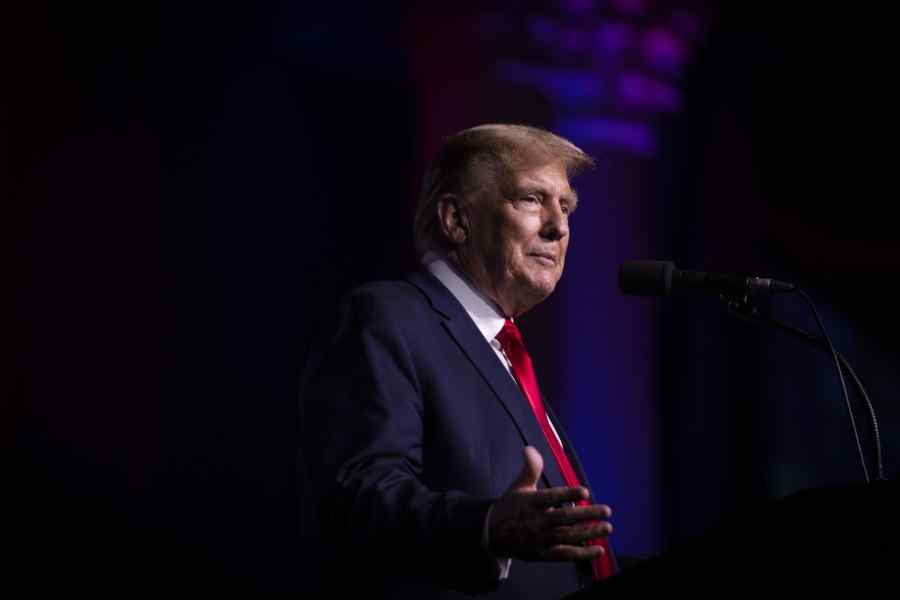“The characters in this movie... the animal in them has woken up. They are all like animals. That’s why there’s violence. This is a family drama, a father-son story… It is a reflection of what happens in a society.”
This is how Bobby Deol, the antagonist of the Ranbir Kapoor starrer super-hit film, Animal, describes the socio-psychological core of the movie. The views of the actor who plays Abrar Haque, the savage Muslim rival and distant cousin of the hero, Ranvijay Singh, are in lockstep with the vision of the director, Sandeep Reddy Vanga. Apart from his specialisation in controversy-courting film marketing, Vanga focuses on the aesthetic presentation of violence as a pure, unchained expression of the primal masculine impulse.
In his previous movies, Kabir Singh and Arjun Reddy, the motive for the violence lay in claiming complete ownership over a desired woman. While the movies were generally panned by critics as crude and misogynistic, they received exceptional commercial success. Animal also shares this aesthetic presentation of violence. But the motive of the violence transcends the mere subjugation of women; it extends to the defence of an aggressive ‘Hindu’ masculinity and the creation of a ‘sacred’ Hindu community through violence directed at the ‘Other’. These interlocking frames of unabashed sexism and communalism are central to the movie achieving its record-breaking ballast.
Animal opens with a ‘humorous’ tale of a monkey molesting a bathing woman and subsequently killing a man dispatched to control him. Molesting and killing, in this schema, are the immutable characteristics of the species of the humanoid animal.
The prevailing patriarchal ‘common sense’ (undergirding notions of honour, control and gender roles) provide a sturdy legitimacy to the director’s aesthetic brand of juvenile misogyny. Film critics, such as Sucharita Tyagi and Shubhra Gupta, seem altogether correct in their assessment that the locus of Vanga’s cinematic appeal lies in his crude but skilful deployment of misogyny rather than in a liberatory appeal of an inherently ‘natural’, animalistic nature.
We may understand Vanga’s emergence as the prophet of ape-brained masculinity in the context of growing male anxiety over the shifting inter-personal subjectivity of educated women. According to NFHS-5 data, even as huge gender gaps in the workforce persist, the gaps between men and women in terms of educational attainment have been shrinking. Improved access to education (along with the digital revolution) has meant that the growing cohort of urban educated women now have similar aspirations and desires as their male counterparts.
In a 2020 article titled “Is India on the cusp of a gender revolution?”, the political scientists, Rahul Verma and Ankita Barthwal, parse data from the biannual YouGov-Mint-CPR Millennial Survey. “Our analysis suggests, firstly, a striking similarity in the nature of responses between the two genders on questions relating to marriage and parenthood… Women, more than men, wanted to get married later in life. Women were also more likely to prefer love marriages, and marriages outside their caste, religion and income level, compared to men.” Their tentative conclusion? “Across five domains that restrict women’s mobility - marriage, parenting, professional space, friendship, and politics - the first signs of a challenge to the status quo are now visible.”
Could this bubbling feminist consciousness transmute into an autonomous feminist politics that can credibly demand and/or wrench equality from the dominant Indian males?
That is still an open question. However, what is clear is that moral entrepreneurs like Vanga are riding the heady wave of a reactionary masculinity stirred by gnawing anxiety over the rising demands of equality made by educated women in particular. These demands have the potential to upend gender-based assumptions structuring both domestic life and the professional workplaces, both of which remain highly unequal.
Vanga’s movies teem with the kind of low-grade, testosterone-fuelled violence described by the Stanford biologist, Robert Sapolsky, in the book, The Trouble with Testosterone. Sapolsky demonstrated that testosterone does not drive the pattern or direction of violence; it only heightens the intensity of violence. Reporting on experiments conducted among a hierarchical society of apes, Sapolsky notes that the insertion of high amounts of testosterone among mid-ranking apes did not make them any less obsequious and deferential towards the higher-ranking apes, just more brutally violent towards the lower-ranking ones. This is also the defining feature of the violence of the protagonist of Animal. He desperately clings on to his abusive father’s coat-tails for paternal direction while indulging in gruesome spectacles of consequence-less violence because, like an unhinged son of a feudal zamindar, he can afford to do so. Interestingly, the Animal universe, much like a feudal village, does not have any trace of a police force or any law-and-order mechanism.
The only interesting insight gained from Animal is its depiction of the mimetic nature of the conflict between the subject and the rival and, by extension, the mimetic formation of the masculine Hindu subjectivity as an imitation of the (imagined) superior Muslim Other.
The philosopher, René Girard, offered an influential theory of mimetic conflict in his magnum opus, Violence and the Sacred. The structure of violent conflict in human societies, Girard argued, is based not on any primal impulse but in the fundamental concept of desire. Among other domains, Girard makes a careful study of myths found in various human cultures to underline that all human desire is mimetic: “the subject desires the object because the rival desires it. In desiring an object the rival alerts the subject to the desirability of the object.” Hence, Girard centres the “mimetic triangle of the model, the disciple, and the object” to understand the evolution of reciprocal violent conflict.
In Animal, the Muslim antagonist, Bobby Deol, is clearly the ‘animalistic’ model to be imitated by the Hindu protagonist subject. They share certain desired objects (contested possessions of women and family wealth). In an interview, Vanga explains that Bobby Deol was chosen to play the Muslim model because he looked ‘stronger’ and more ‘macho’ than Ranbir Kapoor. Having being cast adrift from the paternal direction of his father, Ranvijay looks upon Abrar as his ‘master’, modelling himself on the latter’s fearsome masculinity. He blindly imitates Abrar to surmount the family crisis forced upon him. This includes the imitation of rapacious sexual appetite and the aggressive subordination of multiple women.
Finally, the intentionally slapdash and chaotic editing harvests the prevalent anxieties and the prejudice of the audience into a trance like identification with the hero’s odyssey. This journey involves unceasing sequences of maniacal violence and ends in a final rapturous release: the vanquishing of the Muslim antagonist that ushers in personal redemption and filial reconciliation (along with the ritual celebration of Diwali).
The fetishisation of Muslim bodies has long been a staple of Hindutva and its antecedent discourses. Swami Vivekananda routinely chastised Hindus for their weak masculinity (prescribing 'beef, biceps and Bhagavad Gita'). Hindu identity, Vivekananda posited, might be built on the 'body of Islam and the mind of Vedanta'. A century back, in U.N. Mukherji’s influential A Dying Race, the writer lamented the decline of the race of Hindus and explicitly advocated the emulation of the superior Muslim communal mobilisation based on the latter’s religious revival and collective discipline.
Christophe Jaffrelot’s influential thesis about Hindutva’s ideological construction also centres around strategic emulation and stigmatisation. From its pre-Independence days, Hindutva ideologues, powered by anxieties around psychological inferiority and communal decline, had emulated the British and the Muslims, in different respects, in their patterns of political mobilisation. Yet, especially in case of the Muslim model, the emulated element is not only retrospectively cast as ‘authentically Hindu’ but the Muslim model is also correspondingly stigmatised, partly as a means to shroud the shameful process of imitation.
This is also the origin of the theory of scapegoating in Girard’s theory. Scapegoats are purged not because they are dissimilar but because they are intimately similar to the subject community. They can often be brothers or cousins, as is the case with Abrar and Ranvijay. The scene where Abrar is first introduced is a perfect illustration of Girard’s ‘mimetic doubles’, their faces superimposed on to each other, indistinguishable in their shared violent obsessions.
Asim Ali is a political researcher and columnist










